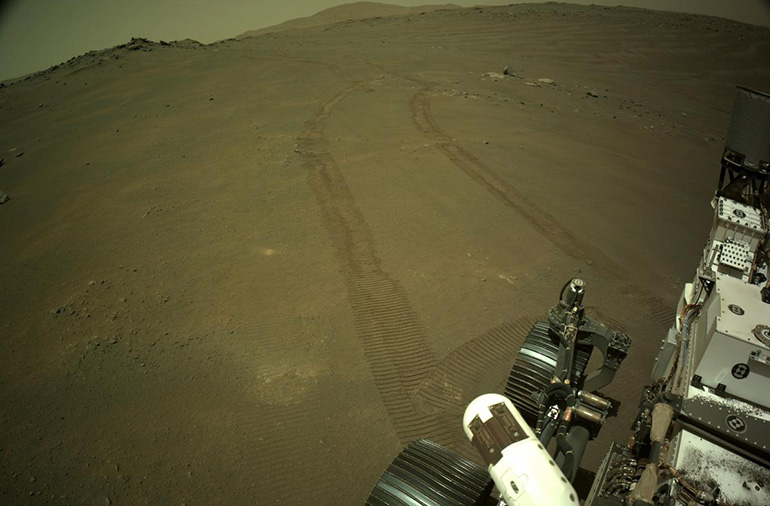|
Listen to this article  |

The Perseverance Rover’s view on Mars on sol 351, before it began its multiple-sol drive. | Source: NASA/JPL
The Perseverance Rover has spent over a year on Mars, but it’s still hitting new milestones. The rover completed its first multiple sol, or Martian day, drive this week.
While the drive was the same distance as a previous drive that was split over three sols, doing it all in one go presented unique challenges for the rover.
First, it requires more planning from the JPL and NASA team. A three-sol drive means they have to create and evaluate three times the number of drive path segments and associated terrain evaluations. This is complicated even more by the fact that the team won’t know exactly where the rover will end its previous drive.
The drive is also more difficult for the rover itself. Perseverance uses Autonav, which creates 3D maps of the terrain ahead and plans routes without any direction from a controller on Earth. Autonav is good at picking out obstacles like rocks, but struggles with identifying sand, which the rover could get stuck in.
To avoid sand, the rover also has a map of Mars with sandy zones labeled as “keep-out-zones”. During a normal drive, the rover can easily avoid these areas, but as the drive grows longer so does the rover’s degree of uncertainty about exactly where it is on its map of Mars.
During its three-sol drive, the rover accounted for this uncertainty by enlarging keep-out-zones as it drove. Larger keep-out-zones means the rover has less space to navigate. The zones are reset when the team localizes exactly where the rover is on Mars.
The rover completed its three-sol drive while on its way to its final sampling location on its crater floor campaign. After collecting the sample, the rover will head to the Jezero delta.
Perseverance was sent to Mars to look for signs of ancient life and collect rock samples to be returned to Earth. The mission will hopefully last at least one Mars year, or about 687 Earth days.
Credit: Source link


Comments are closed.